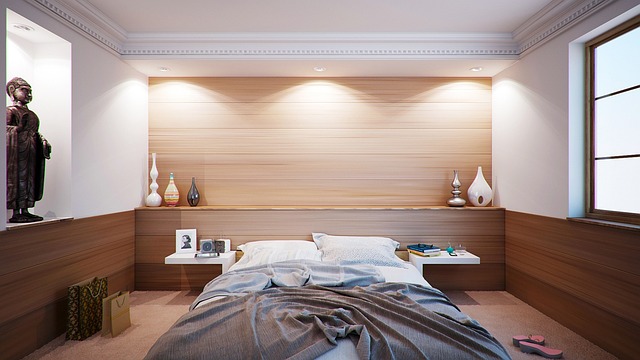Read tips for selecting interior design styles
Choosing the right interior design style for your home can feel overwhelming with countless options available. From modern minimalism to rustic farmhouse charm, each design approach offers unique characteristics that can transform your living space. Understanding different styles, materials, and design principles helps you make informed decisions that reflect your personality while creating a functional and beautiful environment. This comprehensive guide will walk you through essential considerations for selecting an interior design style that suits your lifestyle, budget, and aesthetic preferences.

Read tips for selecting interior design styles
Selecting an interior design style is one of the most important decisions you’ll make when creating or renovating your living space. The right style serves as the foundation for all your decorating choices, from furniture selection to color schemes. Understanding your personal preferences, lifestyle needs, and the architectural features of your home will guide you toward a style that feels authentic and sustainable over time.
Discover diverse design materials
Materials play a crucial role in defining any interior design style. Natural materials like wood, stone, and metal create different atmospheres depending on how they’re used. Hardwood floors bring warmth to traditional and contemporary spaces alike, while exposed brick walls add character to industrial or loft-style designs. Marble countertops elevate luxury and classic styles, whereas concrete surfaces complement modern and minimalist approaches.
Textile choices also significantly impact your design style. Linen and cotton fabrics work well in casual, coastal, or Scandinavian designs, while velvet and silk enhance formal or glamorous styles. Consider mixing textures to add depth and interest to your space. Combining smooth surfaces with rough textures, such as pairing a sleek glass coffee table with a chunky knit throw, creates visual contrast that makes rooms more engaging.
Find the perfect layout for your space
Room layout directly influences which design styles will work best in your home. Open floor plans suit modern, contemporary, and minimalist styles that emphasize clean lines and uncluttered spaces. Traditional layouts with defined rooms work well for classic styles like Victorian, Colonial, or formal traditional designs that benefit from distinct functional areas.
Consider your home’s architectural features when selecting a style. High ceilings accommodate dramatic elements found in styles like Art Deco or Gothic Revival, while low ceilings work better with cozy styles like cottage or Scandinavian design. Large windows support styles that emphasize natural light, such as modern farmhouse or coastal designs, while smaller windows might suit more intimate styles like English country or traditional.
Furniture placement should enhance traffic flow while supporting your chosen style’s principles. Symmetrical arrangements work well in formal traditional styles, while asymmetrical groupings suit contemporary and eclectic approaches.
Explore color palettes that inspire
Color palettes are fundamental to establishing your interior design style. Neutral palettes with whites, grays, and beiges form the backbone of modern, Scandinavian, and minimalist styles. These colors create calm, sophisticated environments that feel timeless and versatile. Earth tones including browns, tans, and warm grays work well in rustic, farmhouse, and traditional styles.
Bold color schemes can define more dramatic styles. Deep jewel tones like emerald, sapphire, and ruby suit Art Deco and maximalist approaches, while bright, saturated colors work in eclectic and bohemian styles. Monochromatic color schemes, using various shades of a single color, create sophisticated looks in contemporary and modern designs.
Consider how natural light affects colors throughout the day. North-facing rooms receive cooler light that can make warm colors appear muted, while south-facing rooms get warm light that can intensify cool colors. Test paint colors and fabric samples in your actual space before making final decisions.
Tailor interiors to your unique style
Personalization is key to creating a successful interior design that reflects your lifestyle and preferences. Consider how you use your space daily. Families with young children might prefer durable materials and washable fabrics, making casual styles like farmhouse or contemporary more practical than formal traditional styles requiring delicate fabrics and finishes.
Your entertaining style also influences design choices. Frequent hosts might prefer open layouts and comfortable seating arrangements found in casual contemporary or transitional styles, while those who prefer intimate gatherings might choose cozy traditional or cottage styles with defined conversation areas.
Incorporate personal collections and meaningful objects regardless of your chosen style. Family heirlooms can work in traditional settings, while contemporary art suits modern spaces. The key is displaying these items thoughtfully so they enhance rather than compete with your overall design aesthetic.
Create harmony in your home design
Achieving harmony throughout your home doesn’t require using identical styles in every room, but maintaining some connecting elements creates flow and cohesion. Common approaches include using consistent color palettes, repeating materials like wood finishes or metal accents, or maintaining similar levels of formality across spaces.
Consider creating a style transition between rooms with different functions. A formal living room might use traditional style elements, while an adjacent family room could incorporate more casual contemporary pieces, with shared colors or materials linking the spaces.
Balance is essential in any successful interior design. Mix different scales of furniture and accessories, combine various textures and patterns thoughtfully, and ensure adequate lighting from multiple sources. Even within a single style, rooms need variety to feel interesting and lived-in rather than static or showroom-like.
Remember that interior design styles should serve your lifestyle rather than restrict it. The best design style for your home is one that makes you feel comfortable, reflects your personality, and functions well for your daily needs while creating an environment you genuinely enjoy spending time in.


